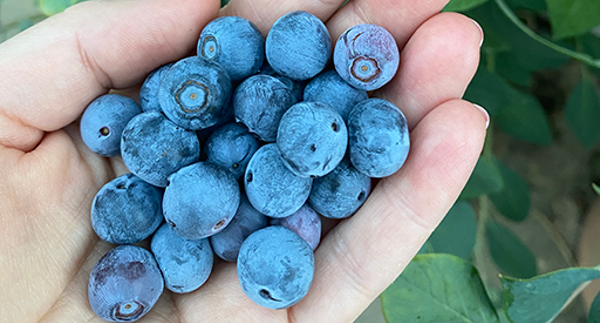
Create your own mini orchard and enjoy fresh fruit at your fingertips.
We’ve rounded up some hardy, easy-care fruit tree options to get you started, along with handy planting and care tips to help them thrive. You’ll also find a few fresh ideas to inspire you to try something different.
1 Choose your fruit
Choose varieties that you enjoy eating and that suit your climate! Your local garden center will have recommendations on the best options for your area.
Feijoas
- Think about size, flavour and when it ripens when choosing a variety!
- Planting a couple of different varieties, can improve pollination and increase fruit yield.
- To extend your harvest season, try mixing early, mid, and late-ripening varieties.
- Top picks include Apollo, Kaiteri, Unique, Wiki Tu, and Bambina.
Citrus
- Whether you’re growing lemons, limes, mandarins, oranges, or grapefruit, select a citrus variety that suits both your garden space and cooking preferences.
- Keep an eye out for dwarf rootstock varieties which will grow into a smaller, more compact tree, perfect for pots.
- Favourites include: Tahitian Lime - a vigorous, hardy tree that produces small, oval bright green fruit which become light yellow when ripe, and Meyer Lemon which fruits on and off year-round and tolerates colder South Island climates.
Blueberries
- Southern Highbush (deciduous) and Rabbiteye (evergreen) blueberry types are best grown in warmer areas of New Zealand as they have a lower chill requirement. Northern Highbush types are suited to cooler regions and have higher chilling requirements.
- Most blueberries are partially self-fertile, meaning they can produce fruit on their own, but planting two or more varieties of the same type will improve pollination and lead to better fruiting.
- Blueberry plants naturally grow into bushy shrubs that can reach up to 1.5m but can be pruned to maintain a more compact height of around 1 metre.
TRY SOMETHING DIFFERENT
- A double-grafted fruit tree has two different varieties, like Black Doris and Santa Rosa plums, grafted onto one rootstock. The two varieties will pollinate each other allowing you to enjoy two types of fruit and a longer harvest from just one tree! You can also try double-grafted apples and pears.
- Make a statement using evergreen fruit trees like feijoas and blueberries to create a hedge that is not only beautiful, but provides a tasty snack!
- Plant strawberries under your citrus trees for a lovely look and more fruity goodness.


2 Choose a Spot
A sunny, sheltered location is ideal for growing healthy, productive fruit trees. Aim for a spot that gets at least six hours of sunlight a day - sunlight is essential for fruit development, sweetness, and ripening. Avoid areas exposed to strong winds which can blow the flowers off, meaning you’ll get less fruit. If space is tight or your garden is particularly windy, try planting against a sunny fence line or wall to provide extra warmth and protection.
3 Prep your soil
Healthy, happy plants start with the soil! Before planting, loosen the soil and work in generous amounts of Compost and Sheep Pellets to improve soil structure. Top it off with a layer of Tui Citrus & Fruit Mix, specially blended with nutrients tailored for fruiting plants. If you're planting in containers, fill with Tui Citrus & Fruit Mix for the perfect growing base.
4 Care for your plants
Help your fruit grow and produce to its full potential with regular feeding. Feed trees in the garden every three months with Tui Citrus Food, which contains essential nutrients for healthy foliage and fruiting. For a quick nutrient boost and fast visible results, apply Tui Citrus & Fruit Liquid Superfood - ideal for pots and containers as well as the garden. Water your trees deeply twice a week while they’re getting established, especially in dry spells. In autumn and early spring, mulch around the base to retain moisture, suppress weeds, and regulate soil temperature.
Related products
Post a comment
Grow fruit favourites Comments
Be the first to write a comment